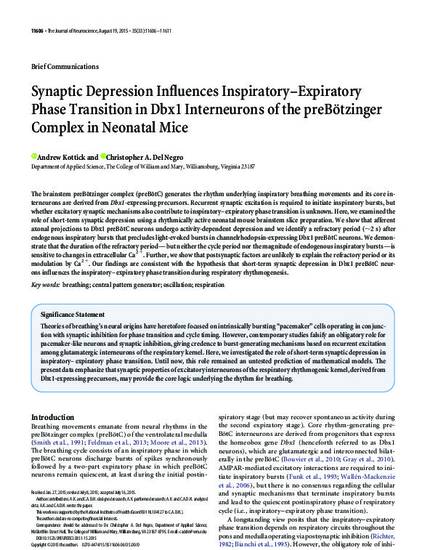
The brainstem preBotzinger complex (preBotC) generates the rhythm underlying inspiratory breathing movements and its core interneurons are derived from Dbx1-expressing precursors. Recurrent synaptic excitation is required to initiate inspiratory bursts, but whether excitatory synaptic mechanisms also contribute to inspiratory-expiratory phase transition is unknown. Here, we examined the role of short-term synaptic depression using a rhythmically active neonatal mouse brainstem slice preparation. We show that afferent axonal projections to Dbx1 preBotC neurons undergo activity-dependent depression and we identify a refractory period (similar to 2 s) after endogenous inspiratory bursts that precludes light-evoked bursts in channelrhodopsin-expressing Dbx1 preBotC neurons. We demonstrate that the duration of the refractory period-but neither the cycle period nor the magnitude of endogenous inspiratory bursts-is sensitive to changes in extracellular Ca2+. Further, we show that postsynaptic factors are unlikely to explain the refractory period or its modulation by Ca2+. Our findings are consistent with the hypothesis that short-term synaptic depression in Dbx1 preBotC neurons influences the inspiratory-expiratory phase transition during respiratory rhythmogenesis.
Available at: http://works.bepress.com/christopher-delnegro/60/
